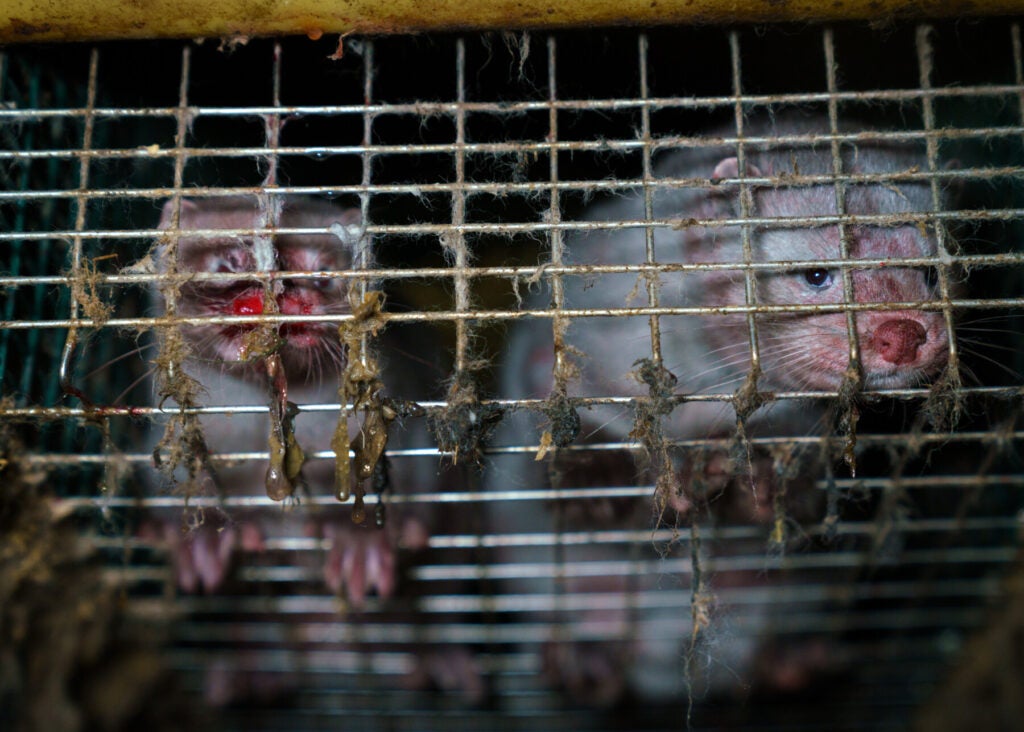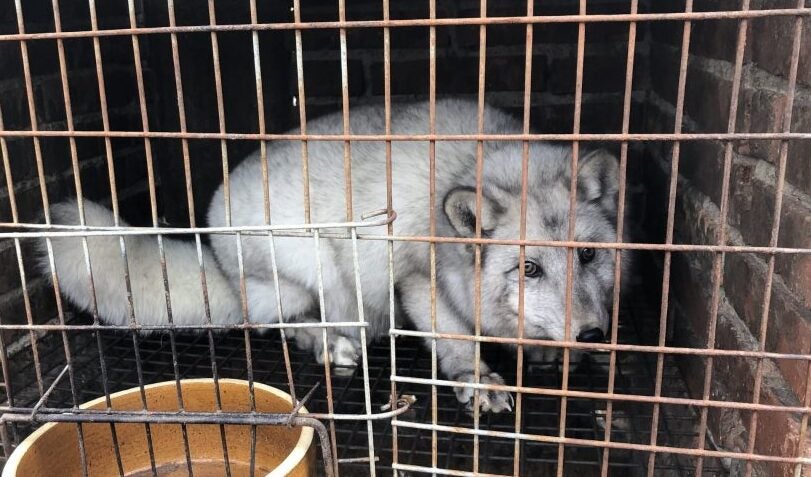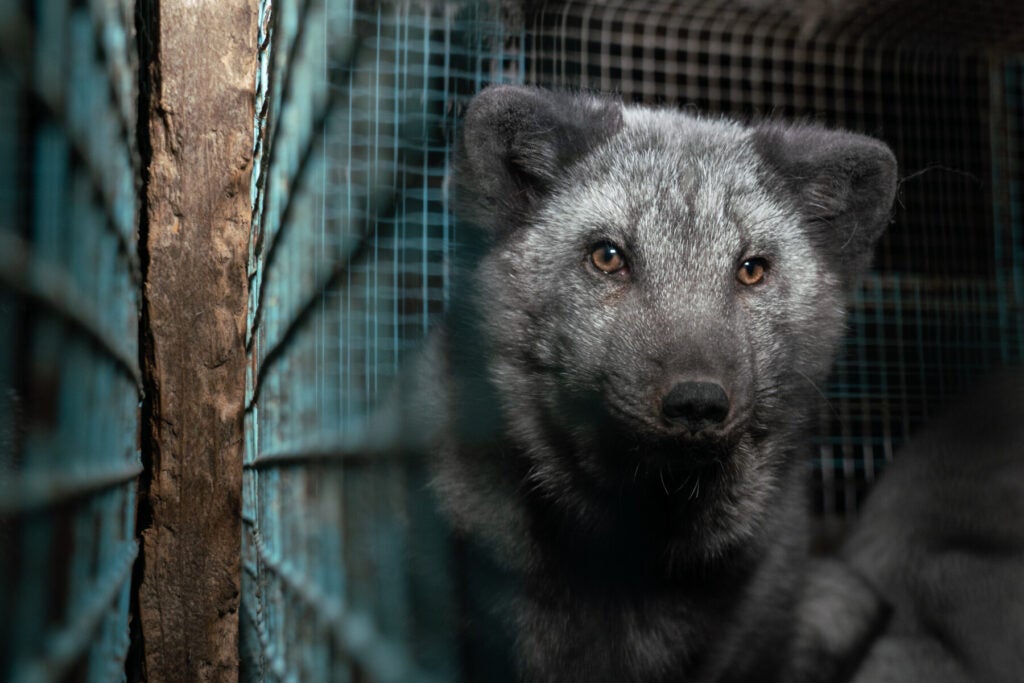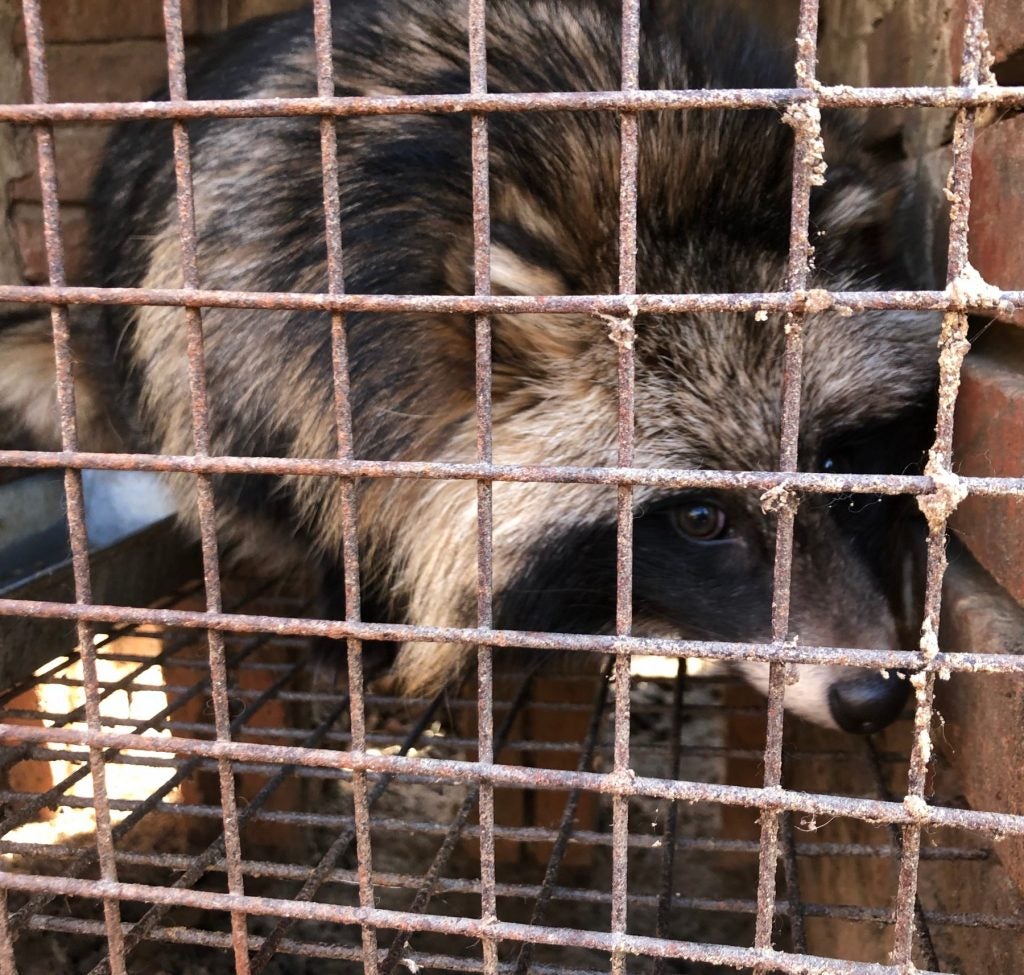Humane Society International / Africa
Author: Kristin Stone
Humane Society International / United Kingdom
Humane Society International / Europe
HSI/Europe believes that consumers must be able to make informed decisions about the products they buy. Labelling is an important part of this.
In recent years, there has been a significant upsurge in cheap fur products entering the EU market. This fur is primarily used as trim in relatively inexpensive garments. It can be difficult for consumers to distinguish between animal fur and good quality fake fur, which is as soft and luxurious-looking as the real thing.
With animal fur being sold at such low prices, consumers will often assume that an item of clothing is so cheap that it cannot possibly include real fur.
EU rules on labelling fur products
At present, the EU law (i.e. Regulation (EU) No 1007/2011) requires manufacturers to state explicitly that textile products contain ‘non-textile parts of animal origin’. This applies not only to fur, but also to down, feather, bone, leather, pearl and horn, which can be confusing.
This labelling requirement is unfortunately only applicable to the products that fall within the scope of the Textile Regulation and consist of at least 80% textile fibres by weight. This means that garments containing animal fur made of less than 80% textile fibres fall beyond of the scope of the legislation. Perversely this means that the more animal fur used in a garment, the less there is a legal requirement to label it as such.
Failure of EU Member States to enforce the law
While this labelling requirement is better than nothing, it has become evident that it is being widely flouted by manufacturers and the legislation is not being well enforced.
With our Fur Free Alliance (FFA) colleagues, in 2017 we produced an investigative report Misleading and Mislabelled: Fur Labelling Problems in the EU Market, which revealed a woeful lack of compliance with the legislation. These findings are likely only a tiny portion of the failure of manufacturers and retailers to implement the legislation and the failure of EU Member States to properly enforce the EU fur labelling rules.
The report concludes that the present EU labelling requirement under the Textiles Regulation is inadequate and confusing for clothing consumers, primarily because it does not provide sufficient information on non-textile parts of animal origin.
The loopholes in the law and the lack of explicit information on the presence of fur, whether for store-bought products or products purchased on popular online shopping sites, means that shoppers cannot make informed decisions when purchasing products that may contain real animal fur.
What is HSI calling for?
Fur labelling should give consumers the information they need to make informed purchasing decisions. HSI is urging the European Parliament to call on the European Commission to commit to delivering a legislative proposal that would require the meaningful labelling of all products containing animal fur (irrespective of the percentage or weight of fur included in the textile product, or non-textile products) in order to allow consumers to make informed decisions when purchasing garments and other products containing fur.
Legislation should also require labels to include the Latin (scientific) name of the species used, the country of origin and information on how it was obtained. This stricter labelling requirement has already been enacted in Switzerland. It should be enacted for all of Europe.
Humane Society International / Europe
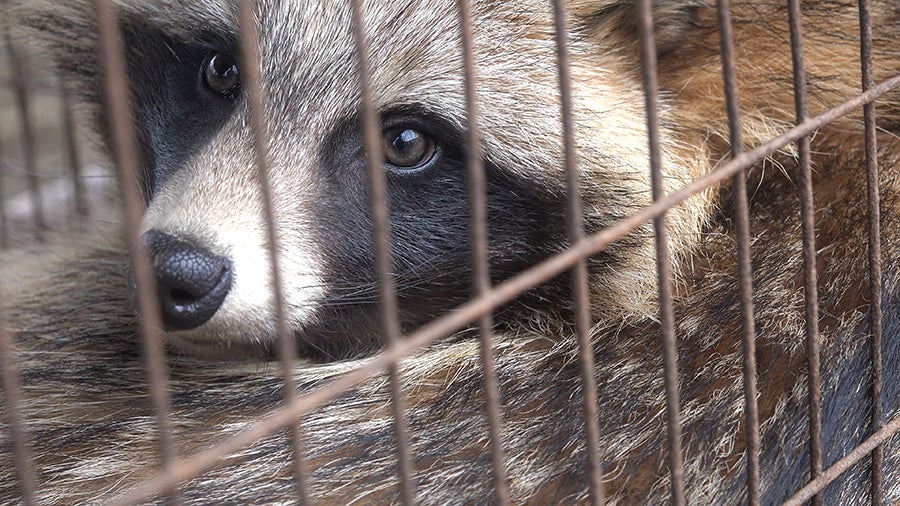
Each year, around 37 million animals in the European Union are still raised and killed solely for their fur. In 2018 alone, 34.7m mink, 2.7m foxes, 166,000 raccoon dogs and 227,000 chinchillas were bred in the EU. Denmark, Finland, Poland and the Netherlands (which is currently phasing out the industry) are the biggest European fur producers.
Fur farming bans
The good news is that various EU Member States have already taken legislative action to ban and phase out fur farming because this practice is inherently inhumane.
Austria, the Netherlands, Belgium, Luxembourg, Slovenia, Croatia, Czech Republic, Slovakia and the departing UK have already done so, while Ireland is in the process of passing a ban on fur production, and legislative proposals have recently been introduced in Bulgaria, Lithuania and Estonia.
Even in Denmark – the bastion of the European fur industry – fox farming has been banned and is being phased out on animal welfare grounds, although regrettably mink farming continues there.
While Germany has not enacted a fur farming ban, it has introduced stringent welfare conditions that have rendered the industry economically unviable, and all remaining fur farms in the country have closed down. Just beyond the EU borders, Norway, Serbia, the Republic of Macedonia and Bosnia and Herzegovina have also banned fur production.
Why HSI believes that fur farming should be banned
The main species of animals – mink and foxes – reared in fur factory farms are still essentially wild animals still not selected for tameness or adaptability to captive environments.
These animals spend short and miserable lives in small wire cages, only to be gassed or electrocuted to death when their pelts are at their prime. We believe that it is unethical to keep animals and kill animals in this way for frivolous fashion purposes. There should be no place for fur farming in an EU that cares about animals.
Animal welfare issues
The inherently poor quality of animal welfare on fur farms is a key reason why fur production should be banned.
Mink and fox are carnivores, predators and highly inquisitive, active animals with complex social lives. Unlike most other types of farm animals, which tend to be flock or herd species, mink are solitary by nature. Mink and fox are both territorial and, in the wild, go to great lengths to defend their territories. These animals are unsuited to farming conditions and suffer great stress from intensive breeding and rearing.
Kept in small wire cages, animals on fur farms exhibit stereotyped behaviour (pacing along the cage wall, repetitive circling, head nodding, etc.) and self mutilation (e.g. sucking or biting tail fur or other parts of the pelts). There is also a high level of mortality on fur farms.
There is, however, no specific EU legislation providing detailed animal welfare requirements for keeping of animals for fur production. Fur factory farms are covered by Council Directive 98/58/EC, which lays down the general minimum requirements for the protection of all animals kept for farming purposes.
HSI contends that most of these minimum welfare standards are not being met on EU fur farms. Given the physiological and behavioural needs of mink and foxes, the basic housing systems to which they are confined fail to meet the legislative requirements since the animals are unable to express their natural behaviours.
Cage sizes are inadequate, there no provisions for key natural behaviours like a substrate for foxes to dig in or – for the naturally solitary and semi-aquatic mink – any swimming water available, and the animals have no meaningful opportunities to withdraw from the presence of their conspecifics.
The practice of intensively farming animals for their fur is inherently inhumane.
Other environmental and health reasons to ban fur farming
Contrary to industry claims, fur production is far from green. Intensive fur farms produce tonnes of manure, greenhouse emissions, nutrient flows, terrible odors and can attract armies of flies. Waste runoff is a major pollution problem that contaminates soil and waterways.
Fur farming is also a primary pathway for the introduction of invasive alien species, which are a major driver of biodiversity loss. The American mink has long been implicated in the displacement of native mammals such as the European mink and European polecat, the decline of some water vole populations and the drastically decreased breeding success of native ground-nesting birds and domestic fowl.
Significantly, as recent outbreaks of SARS-CoV-2 on mink farms in the Netherlands, Denmark and Spain during the COVID-19 pandemic has highlighted, fur animals can serve as a potential reservoir for dangerous pathogens that can globally threaten human health and the economy. Raccoon dogs and foxes sold in wildlife markets in Asia have also been found to be susceptible to coronaviruses.
What is HSI calling for?
Humane Society International is fundamentally opposed to the exploitation of animals for fur production; it is an unnecessary product for which there are many humane, warm and beautiful alternatives. We are:
- Working with the Fur Free Alliance coalition to end the international fur trade
- Working with global fashion brands and retailers to announce fur-free policies
- Advocating the adoption of fur production bans in Member States where this cruel industry persists
- Calling for the inclusion of the American mink on the EU list of invasive alien species of Union concern
Humane Society International / United Kingdom
Humane Society International / United Kingdom
Humane Society International / Europe
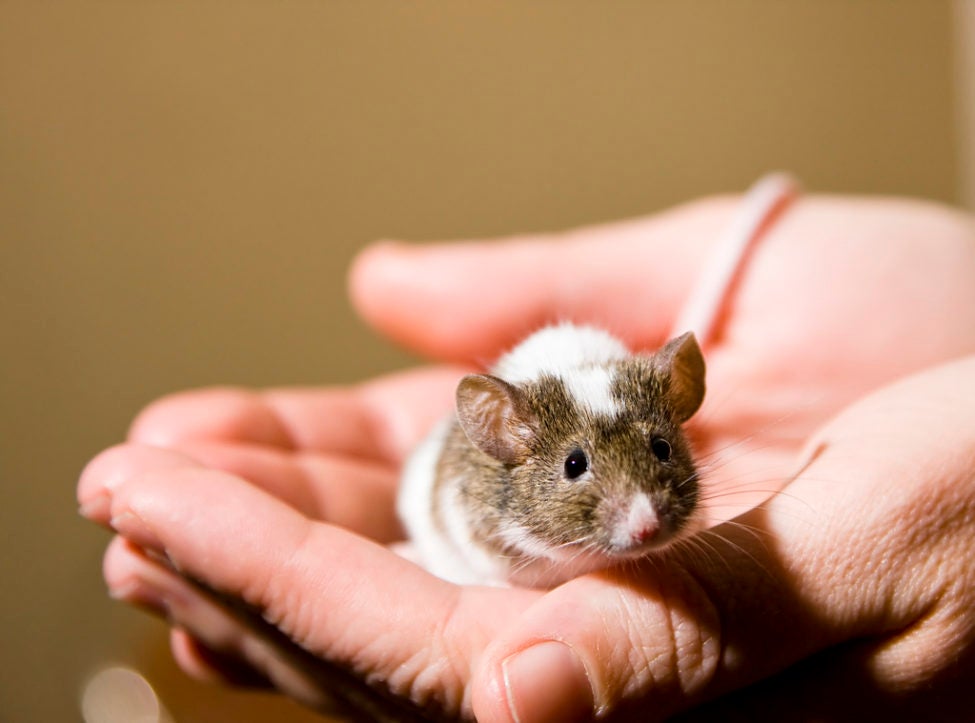
The European Union’s precedent-setting ban on cosmetic animal testing and trade has been undermined from within by two recent decisions to require cosmetic ingredients to undergo new animal testing.
The European Chemicals Agency (ECHA) Board of Appeals recently upheld a decision by ECHA staff to require German chemical company Symrise to carry out several tests on vertebrate animals to fulfill ‘tick-box’ registration requirements under the Registration, Evaluation and Authorization of Chemicals (REACH) Regulation.
The chemicals in question, homosalate and 2-ethylhexyl salicylate, are used exclusively as cosmetic ingredients in sunscreens. As such, the animal testing requirements of the REACH Regulation directly conflict with the animal testing ban under the Cosmetics Regulation.
To its credit, Symrise contested ECHA’s demands for multiple new animal tests – which together would subject several thousand animals and their offspring to suffering and death – arguing that such tests cannot be required for substances used exclusively as ingredients in cosmetic products. Further, one of the core tenets of REACH is to promote alternatives to animal testing for assessing chemical hazards.
On August 18, the ECHA Board of Appeals ruled against Symrise, citing that REACH does not contain an automatic exemption from new testing, even if a substance is used exclusively as an ingredient in cosmetics. This decision is the latest in a series of positions taken by ECHA which act at variance to the animal replacement mandate under REACH, and now also the celebrated ban on animal testing for cosmetics. The ruling also contradicts numerous calls by the European Parliament to ensure the EU ban is not weakened, including a motion passed on July 10th this year, stating specifically that animal testing bans set by the Cosmetics Regulation “must not be compromised by testing conducted under other legislation such as REACH”.
Once the global leader in the move away from animal testing – with the European Parliament in 2018 calling for an international ban on cosmetics testing and trade by 2023 – the actions of certain ECHA and Member State bureaucrats are increasingly eroding the EU’s reputation and leadership status in this area. By contrast, U.S. chemical authorities in the Environmental Protection Agency are being duly applauded for their efforts to replace vertebrate animal testing for chemicals, and EPA’s policy commitment to eliminating both requirements and funding for mammalian animal testing by 2035.
Humane Society International, a leading advocate for cruelty-free cosmetics laws and animal-free safety assessment worldwide, is calling for transformational change within ECHA that reflects its mandated focus on the promotion of alternatives, including actively minimising and progressively replacing animal testing with new human-relevant, non-animal scientific approaches. Without active leadership from ECHA, the EU’s ban – and the increased development of alternative testing methods seen as a result – will be seriously undermined.
HSI will continue to work will EU policymakers and relevant stakeholders to reverse the decisions by ECHA and its Board of Appeals, and to ensure the integrity of the EU’s hard-won ban on cosmetic animal testing remains strong.
Humane Society International / United Kingdom
Humane Society International / Global
Humane Society International / Global

